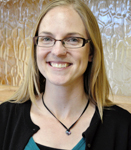 In the closing ceremony of the International AIDS Conference last week, Nancy Pelosi quoted George Bernard Shaw stating, “It is the mark of a truly intelligent person to be moved by statistics.” Pelosi went on to say that she believes everyone in the room was moved throughout the week by statistics but that we were also moved by stories. I couldn’t agree more.
In the closing ceremony of the International AIDS Conference last week, Nancy Pelosi quoted George Bernard Shaw stating, “It is the mark of a truly intelligent person to be moved by statistics.” Pelosi went on to say that she believes everyone in the room was moved throughout the week by statistics but that we were also moved by stories. I couldn’t agree more.
I had never attended the International AIDS Conference before this year but I have been to many other conferences and I am used to attending sessions that describe public health issues in terms of multivariate analyses and odds ratios. Don’t get me wrong, as a researcher by training I get very excited by p-values less than 0.05, but to keep my interest I also need to feel connected, inspired, and guided by the human side of public health. This is exactly what the International AIDS Conference delivered. Presentations ranged from statistically savvy to emotionally charged and nearly every session included a mix of researchers, program implementers, activists, community leaders, and civil society members, creating a holistic view of HIV/AIDS and the challenges we must overcome if we are going to turn the tide. Read more »
